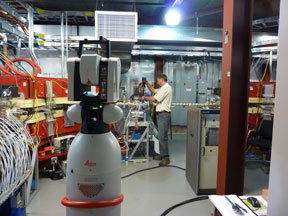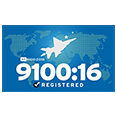
3D scanning offers a variety of benefits for a wide array of industries. But, to recognize those benefits, it is important to first understand what 3D scanning technology actually is. A 3D scanner is built to pull data, including measurements, from an object or environment, often with the intention of replication. As you might imagine, this kind of technology offers a plethora of data that contains detailed insights about the object or environment in question.
One of the primary reasons to add 3D scanners to a business, particularly one involving production, is efficiency. A 3D scanner can make the development, design, and production of a product faster and more efficient, in part due to increased precision and accuracy. Additionally, the addition of 3D scanners enables the personalization of a variety of crucial products, such as medical devices and prosthetics. These personalizations can lead to increased customer satisfaction and comfort of use.
Read on to discover what industries commonly use 3D scanning, how 3D scanning might benefit your business, and the role Exact Metrology can play.
What Industries Use 3D Scanning
Many industries currently employ 3D scanning for their essential processes. One of the most common industries using 3D scanning technology is quality control and inspection. Because 3D scanning technology allows for significantly increased precision and replicability, it is no wonder the quality control and inspection industry has seen the value in its adoption. In addition to increased consistency across manufacturing, using 3D scanning as part of production also increases the quality and speed of output. In turn, these increases contribute to streamlined inspection processes. One way you might see a 3D scanner for inspection in action is through the creation of precise 3D models for the manufactured parts. These models can serve as examples for better understanding and as quality comparison objects. The presence of these models also allows for optimization of workflows as manufacturers can use them to more efficiently plan and break up the manufacturing process of a product or product element.
Other industries that frequently use 3D scanning include the aerospace, automotive, dental, and medical industries. In aerospace and automotive, we see 3D data being used to create CAD models of aircraft and automobiles, allowing for additional precise development and design. In the dental industry, 3D dental scans provide increased accuracy, precision, and comfort when scanning a patient’s mouth and teeth. A 3D scan is much less invasive than the old-school x-ray options! And in the larger medical industry, 3D scanning has led to outstanding innovations in prosthetics, braces, and implants. Patients in need of such devices are able to live much more comfortable lives with more precise and tailored equipment to rely on.
In summary, two of the main ways we are seeing 3D scanning technology being employed across industries are prototyping and reverse engineering. Prototyping through 3D printing involves the scanning of an object, translation of the object’s data into a digital map of the object, and printing a highly precise 3D prototype of the object. Reverse engineering refers to the production of an object without access to a CAD file or other form of blueprint. Reverse engineering 3D scanners seek to determine the geometric measurements of an object or environment, thereby creating a fresh CAD file for future production or archival purposes.
3D Scanning Technologies Used By Exact Metrology
At Exact Metrology, we feature an array of 3D scanning technologies so we can choose exactly the right one or combination for an individual business’s purposes and goals. Our 3D scanning technologies include laser scanners, white light scanners, and CT scanners, each operating at a different speed and providing a different level of precision and detail.
Our laser scanners support scan measurements of areas up to 18 feet in diameter and capture close to 500,000 points per second. The white light scanners support scan measurements of areas up to a few square feet and capture 1,000,000 points per second. And our CT scanners specialize in capturing internal structures through two-dimensional x-ray photos.
We determine which of these approaches is best suited to the customer’s needs and begin by discussing the customer’s intentions for the scan. Understanding the intended use of the 3D scan will help us to be as precise and efficient as possible when approaching the project and to ensure that we provide useful data and models.
Contact Exact Metrology
At Exact Metrology, we have years of experience in reverse engineering and 3D scanning technology in addition to our range of scanning equipment and software. We choose the approach and software that is just right for the job specifications. If you are not sure how 3D scanning services might benefit your particular business, we are happy to discuss the possibilities, answer your questions, and offer our insights and suggestions. Contact Exact Metrology for 3D scanning services.





